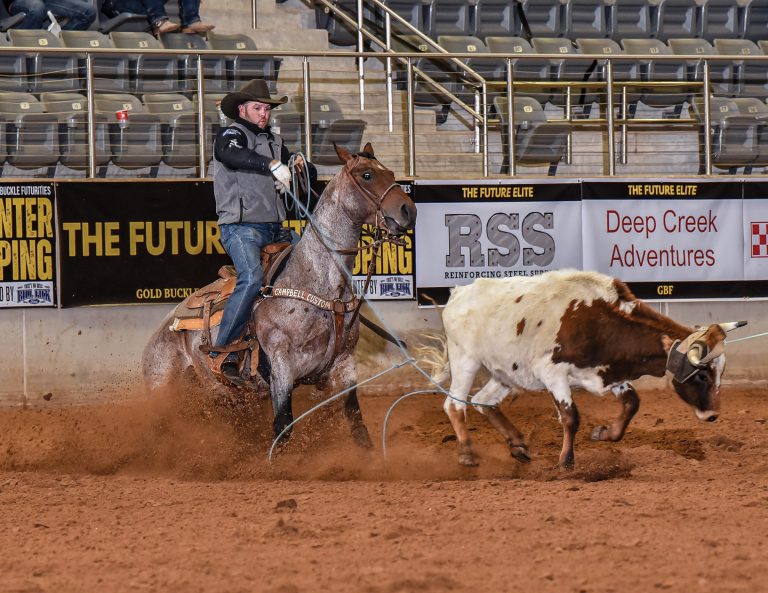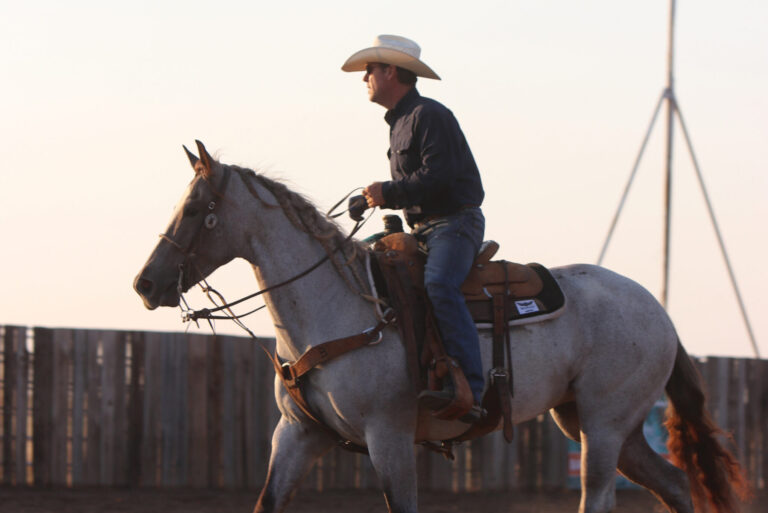I’ve heard people worrying lately about whether or not futurities are bad for the rope horse as an animal, pushing one too hard too soon to compete at these higher-dollar events.
The first thing I think about, in response to that, is how many rope horses came from reining, cutting or cow-horse programs where they were ridden hard as 2- and 3-year-olds first? And there, a trainer decided, after pushing him in an arena that he didn’t excel, that he wasn’t good enough? Those horses already had their own set of issues that we’re trying to avoid on this side of the business.
[WATCH: Dakota Kirchenschlager ‘s Futurity Horse Training Series on Roping.com]
We believe that keeping a horse on pace from their 2-year-old year on, doing each stage in its time, is key. We let them learn and, then, when they’ve hit the milestones they should for that age, we turn them out. Then we bring them back the end of that 2-year-old year, and we start again. That’s better in my mind than waiting until they’re 3 and really cramming everything into them. Every horse is different, admittedly, but if they’ve developed on schedule, it’s better for that horse to get started and not fall through the cracks because someone along the way had a noble idea that they were going to let them grow to a certain point, and then they’re behind and nobody wants them.
This underscores the importance of horses being in the right hands from the start. You have to have someone riding a 2-year-old who has and maintains certain expectations. You have to have someone who has ridden enough to know when to leave well enough alone and kick one out for a week or a month or a season.
[LISTEN: The Foundation Training Philosophy Behind Some of Roping’s Top Horses]
Some horses take longer to check those milestone boxes. Some do it quickly—so at 2, you don’t just go to the next box. You reinforce it, but not to the point they get bored. You can bore them, for sure, if they’re really talented. That’s when I think less riding is good. Through the training process, the right hands will learn a lot about the horses and their minds, and they’ll know if the horses can take time off and come back to where they left off. That’s a big factor in a horse: how much they retain. Some will be hard the first couple of days dealing with freshness, and some don’t have much of that. Those are the fun horses to be around—you can turn them out and they retain everything, and it feels like you started where you left off.
As for the soundness issues, it’s the horses that hit their milestones easily and early and can stand having that time off that generally stay more sound. By no means am I saying the horses that get fresh and take more riding are less effective eventually. It’s just easier to keep the horses sound that don’t take all that riding. Mentally, some horses need to have a certain level of tired to be teachable—and that level of riding can create wear and tear. They’re the horses you can’t lope two circles and get after it. They have to get their mind right before they’re ready to learn. They end up being tough horses. I always wonder how much longer those horses could last if they didn’t take so much leveling. Texaco was like that—he took a lot of riding, and he was great. But I wonder how much longer he’d have lasted if he hadn’t have taken so much to get ready to compete early on.
[READ: Roping’s Much-Needed Horsemanship Refocus]
The days of “this horse is not fun to train, but he’ll be really good by the time he’s 13 or 14” are long gone. I have no use for that horse. Just because somebody bred one like that and he worked out eventually, so they keep breeding them like that, it doesn’t make it right. If everybody bred horses that were only good when they were 10 on, there’s no wonder there aren’t that many people making them. TRJ











